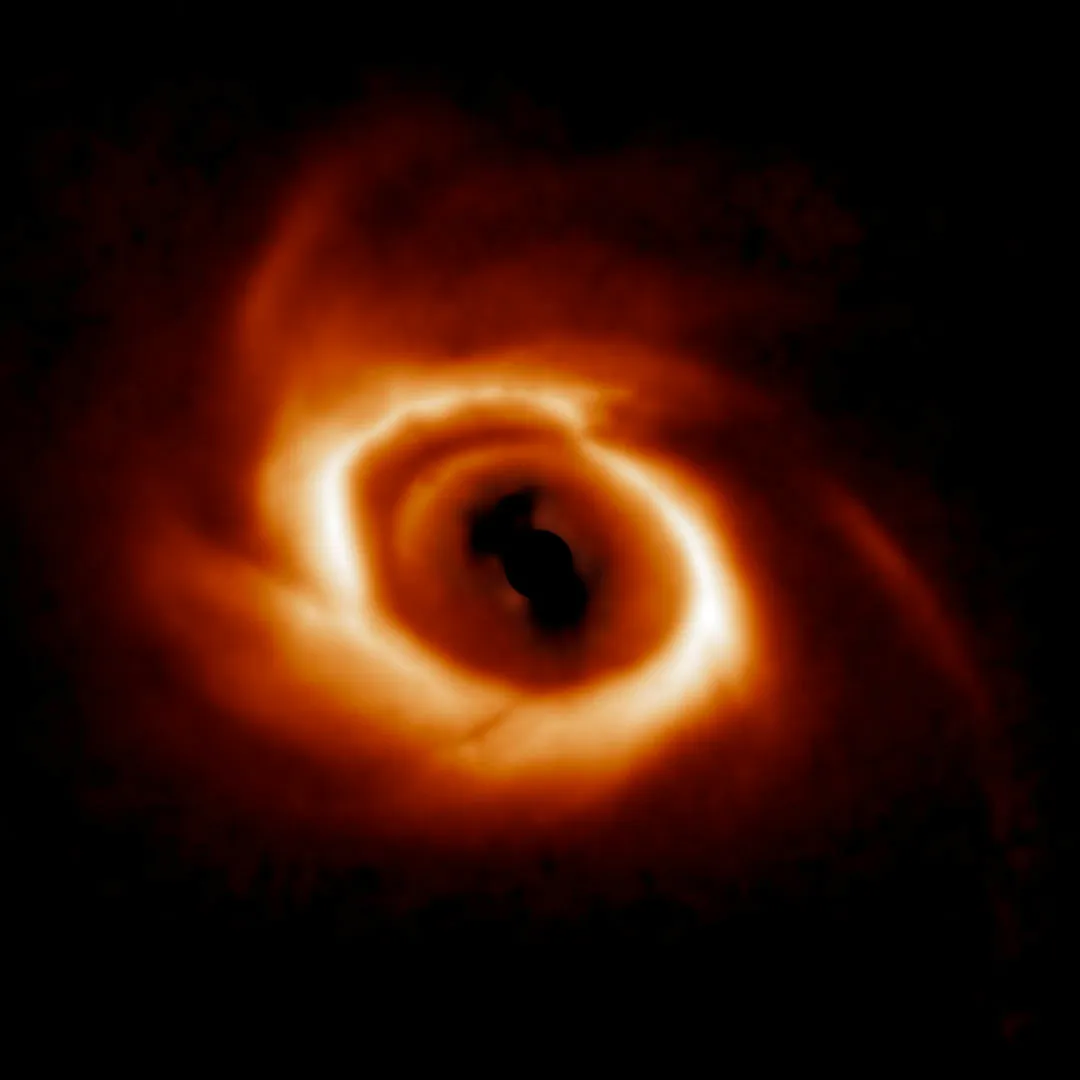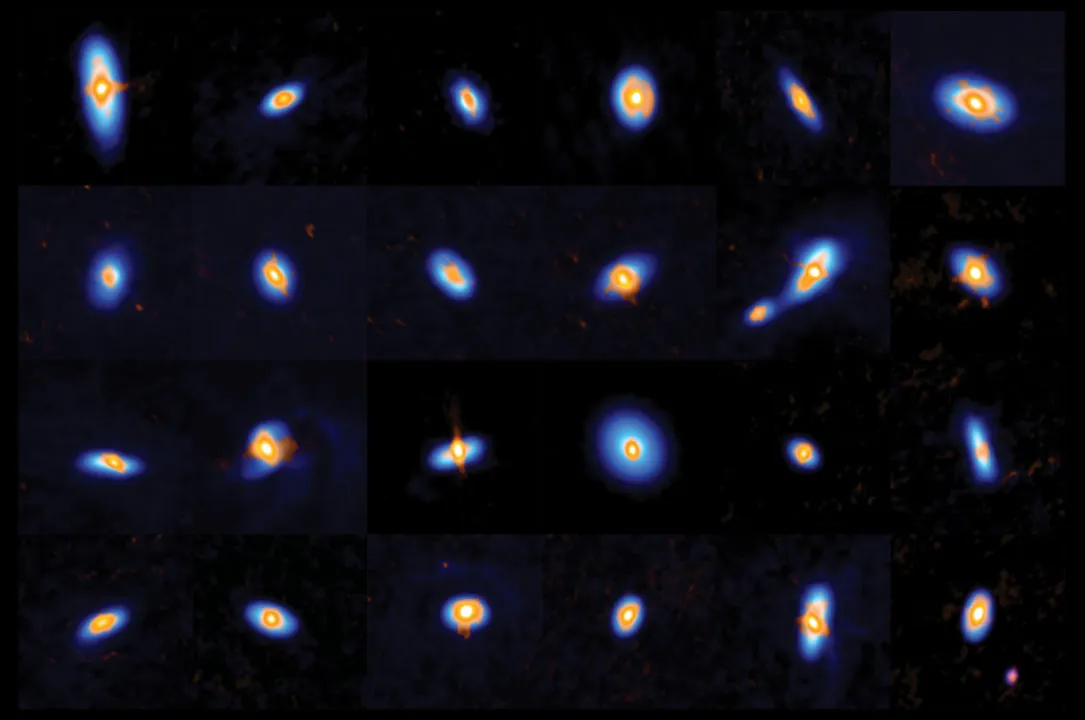The materials that form the building blocks of life on Earth have been found in distant planet-forming discs that are the same size as the Solar System.
Our Solar System formed from a dusty ring of cosmic material circling the Sun, when our host star was still just a stellar newborn.
This ring - known as a protoplanetary disk - contained solid materials that coalesced through gravity over time, eventually growing into the the planets orbiting the Sun that we see today.

Studying other young stars and their protoplanetary discs enables astronomers to analyse the conditions that may have led to the formation of of our own Solar System, and perhaps even the development of life on Earth.
Dr John Ilee is an astrophysicist studying star and planet formation at the University of Leeds.
Using the Atacama Large Millimeter Array (ALMA) in Chile, he and his colleagues have identified organic molecules in protoplanetary discs around young stars, which could point to the building blocks required for the development of organic life.

Where are these protoplanetary discs?
These discs are located between about 300 to 500 lightyears from Earth, so we are actually seeing the discs as they appeared 300 to 500 years ago.
The regions in which these discs exist are some of the closest star-forming regions to our Solar System, which means we can get an excellent view of them.
How did you identify organic molecules?
Compared to previous instruments, ALMA has hugely increased our observational capability. It combines extremely high sensitivity with a high spatial resolution.
This means we can detect faint emission on small scales, which was essential for our study.
We searched for the unique ‘fingerprints’ of these molecules in the ALMA data, which were very faint, but thanks to the data’s exceptional quality we were able to detect their emission.

Were these findings surprising?
These molecules have been detected in protoplanetary discs before, but the fact that we’ve been able to get such improved observations means the abundance of these molecules is much higher than previously thought.
Additionally, they’re located in the ‘inner’ disc regions, within about 50 astronomical units, which is approximately the same scale as our Solar System.
This means we are finding significant amounts of prebiotic materials (which form the building blocks of life) on similar scales to a planetary system like our own.
What conditions result in planet formation around new stars?
The findings suggest that the chemical composition of discs that appear to be forming planets is similar to the composition of our own Solar System.
However, we don’t know if this is required to form planets.
To investigate this we’d need to study the composition of a much larger and statistically significant sample of protoplanetary discs.
This is something that ALMA will be able to do in the near future.

Can complex organic molecules be found only in protoplanetary discs?
Complex organic molecules are found in various environments throughout space, such as the giant clouds of gas and dust that will eventually go on to form stars.
Studies have suggested that molecules such as these are the ‘raw ingredients’ for building molecules that are essential components in biological chemistry on Earth – including things like sugars and the bases of ribonucleic acid (RNA).
However, many of the environments where we find these complex organic molecules are pretty far removed from where we think planets form.
We wanted to understand more about where and how much of these molecules were present in the birthplaces of planets – protoplanetary discs.
Does the presence of such molecules suggest that any formed planets might develop life?
While we can’t say that for certain, the take-home message is that we find these ‘prebiotic’ molecules in large abundances, and at distances from their parent star that are similar in size to our Solar System.
So that suggests the raw ingredients for life are plentiful in the disc of material that forms planets.

What does it tell us about our own Solar System?
Three of the discs in our sample are around T Tauri stars, which are younger versions of stars that are similar to our Sun.
These three objects represent a young stellar evolutionary stage that may go on to form a planetary system similar to our own.
What's next?
We want to know how the molecules got there. Had they been formed in situ by chemical reactions in the disc?
Or have they been inherited from the earlier star-forming phase when the disc was assembled from a large cloud of gas and dust?
Answering these questions would be one of our next steps.
This interview originally appeared in the February 2023 issue of BBC Sky at Night Magazine.
